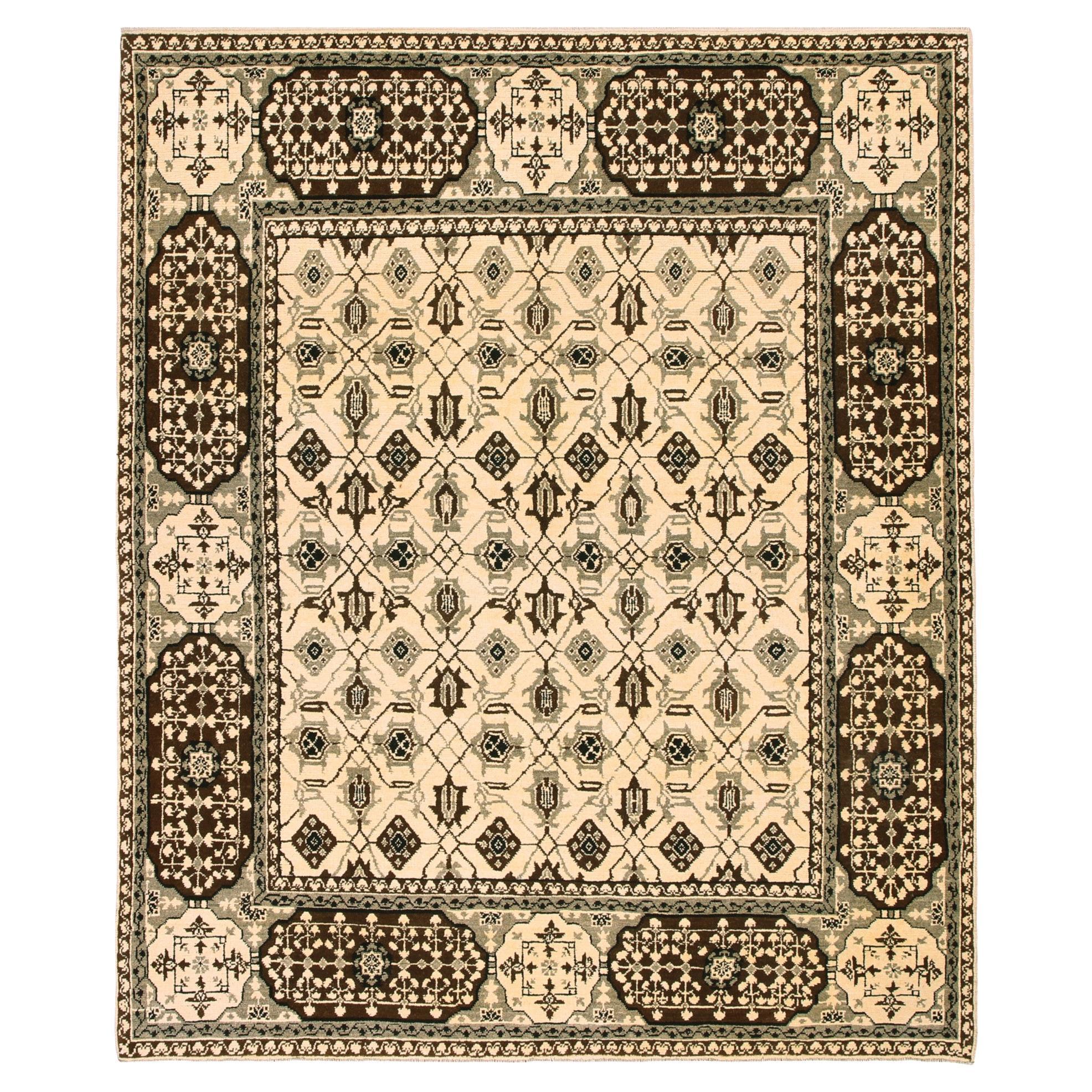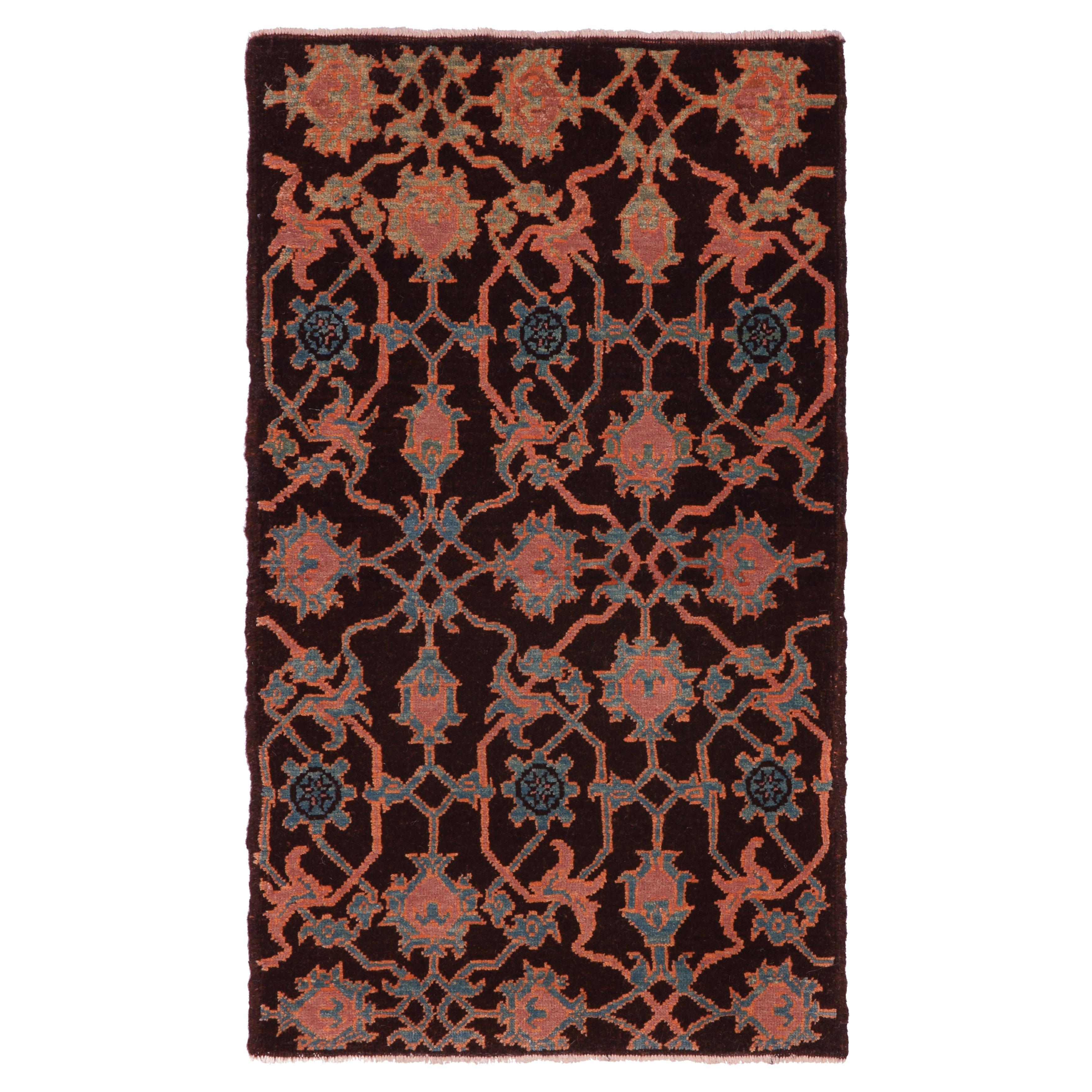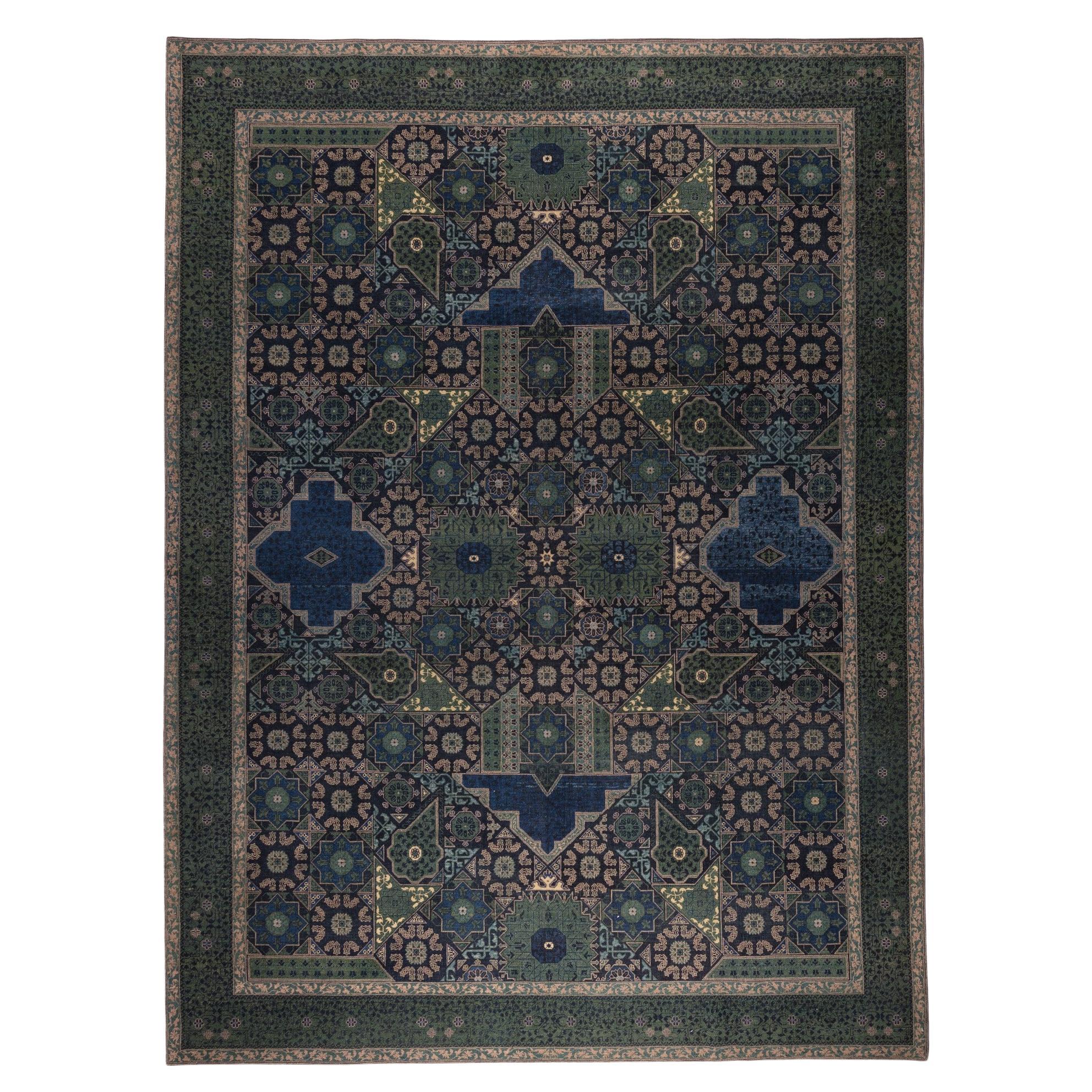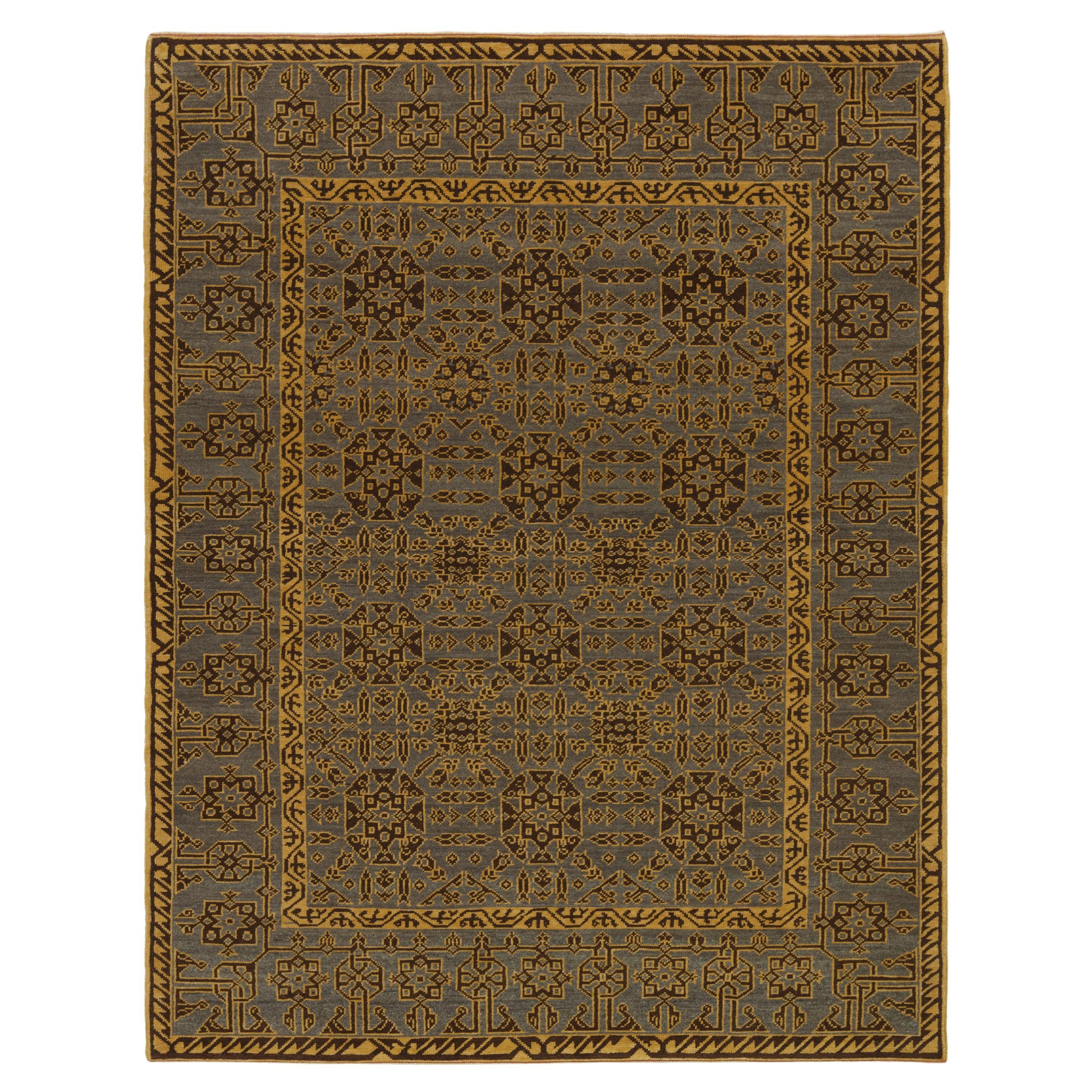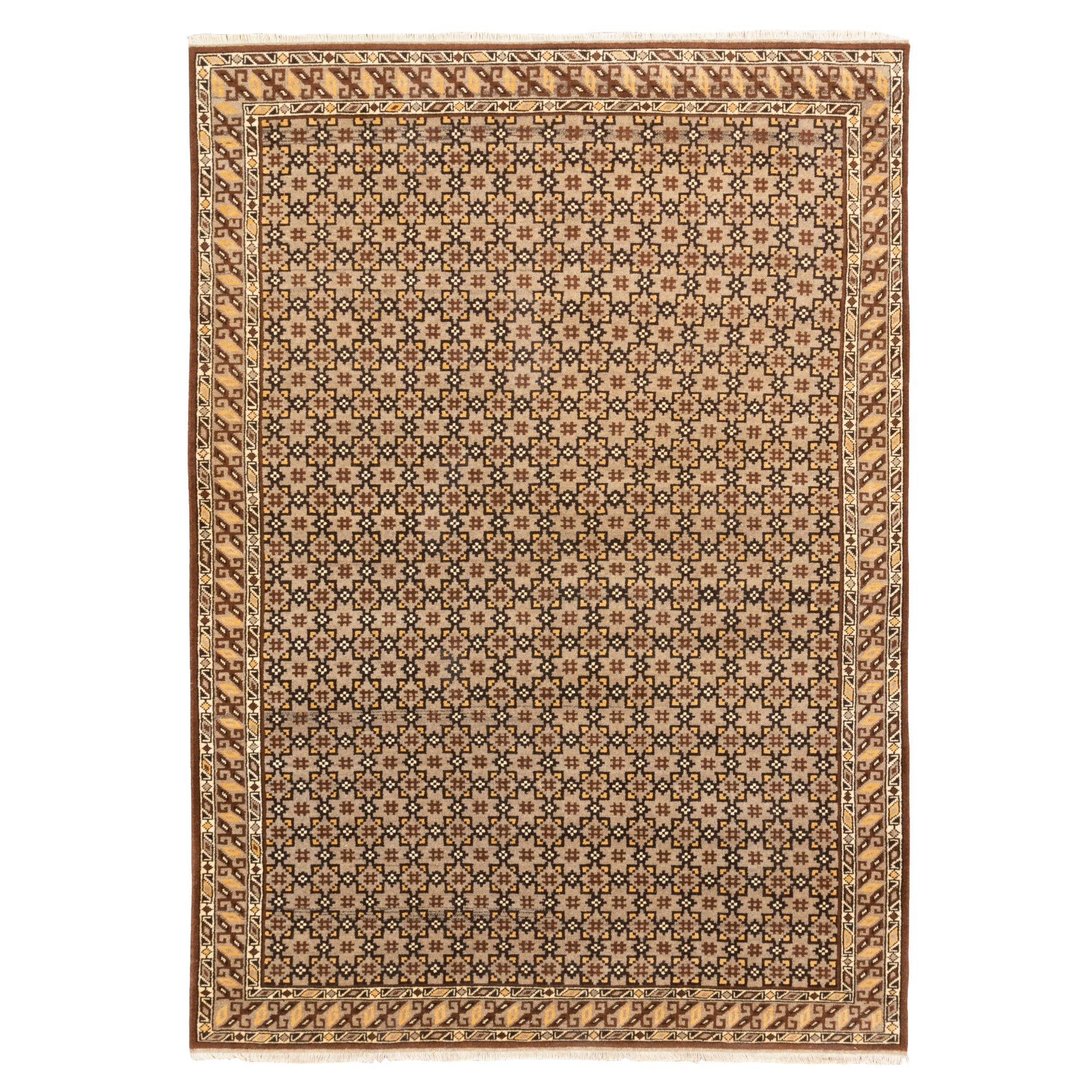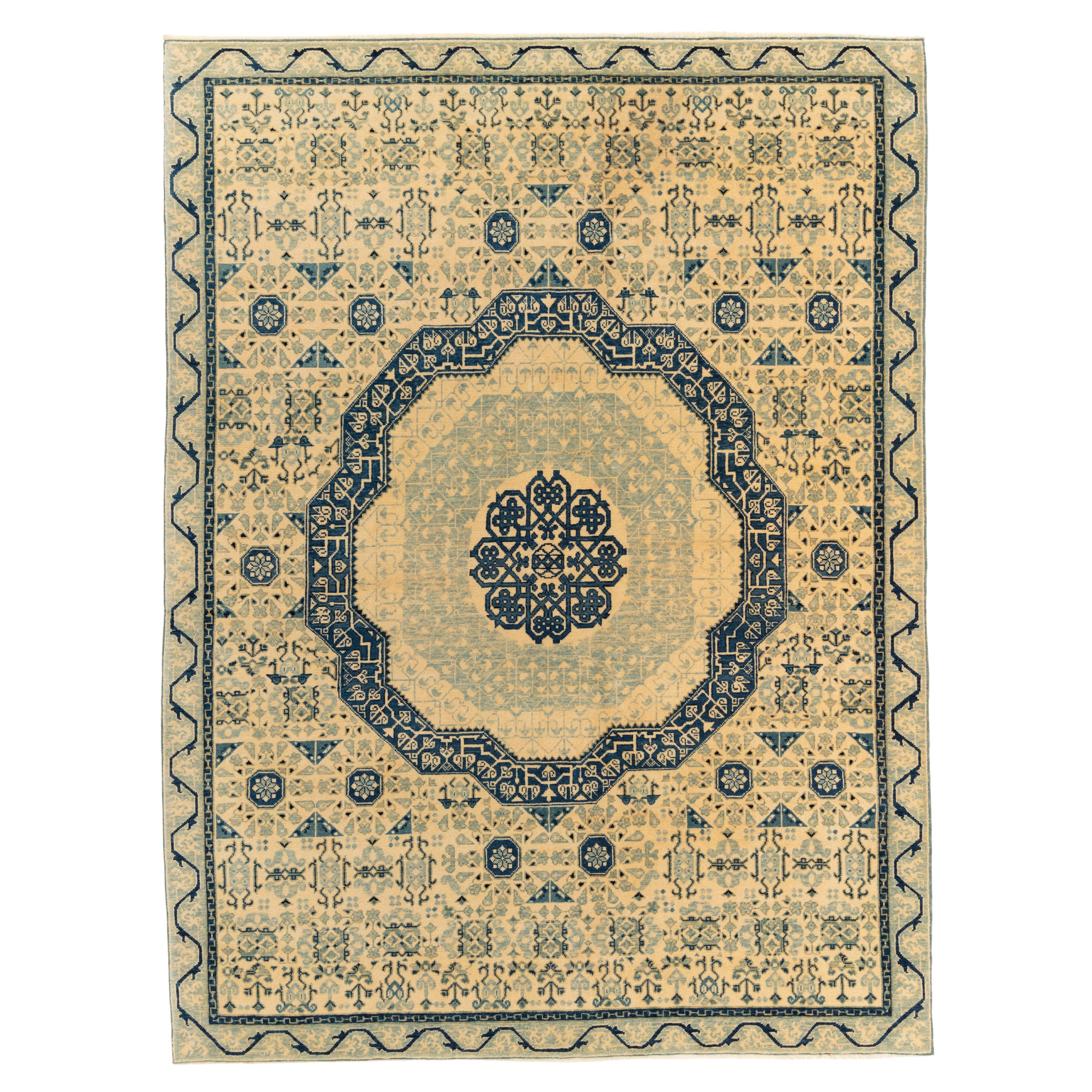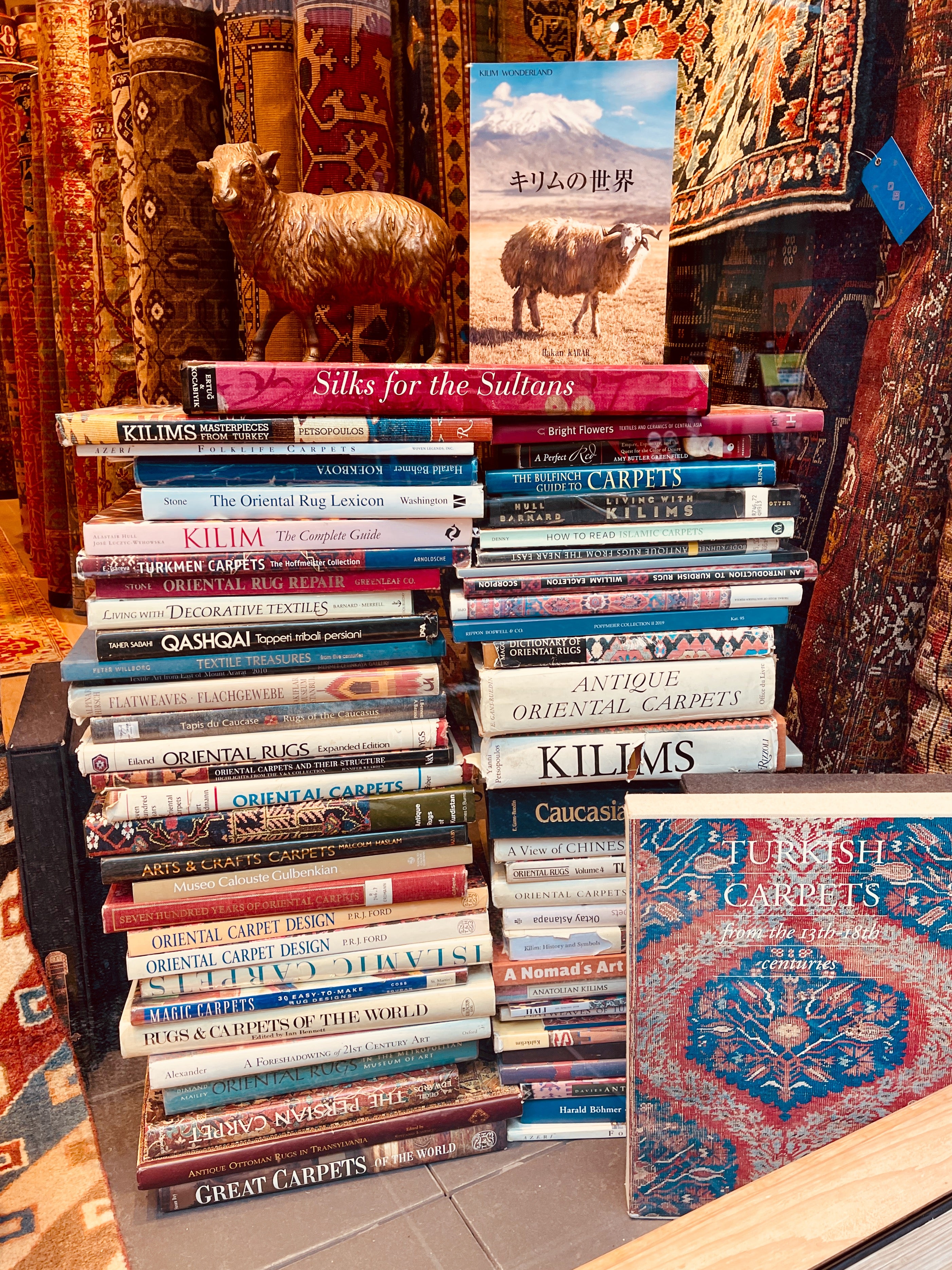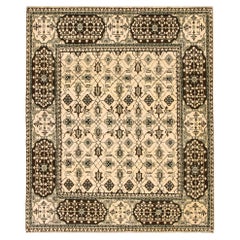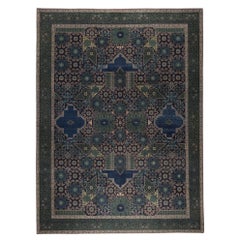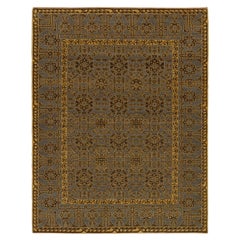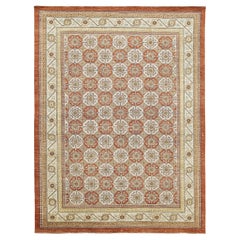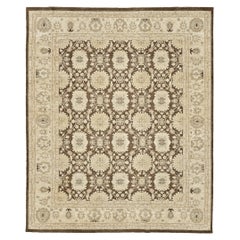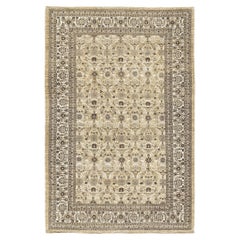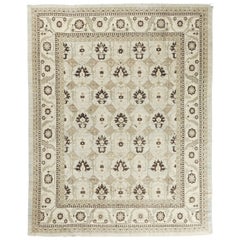Items Similar to Ararat Rugs Mamluk Carpet with Lattice Design, Natural Sheep Wool Colors No Dye
Video Loading
Want more images or videos?
Request additional images or videos from the seller
1 of 6
Ararat Rugs Mamluk Carpet with Lattice Design, Natural Sheep Wool Colors No Dye
$5,600
£4,206.88
€4,851.21
CA$7,770.73
A$8,635
CHF 4,524.83
MX$105,892.83
NOK 57,711.56
SEK 54,292.92
DKK 36,207.39
Shipping
Retrieving quote...The 1stDibs Promise:
Authenticity Guarantee,
Money-Back Guarantee,
24-Hour Cancellation
About the Item
The source carpet comes from the Mercer Collection Sotheby’s 2000 (catalog cover). This Mamluk-Cairene carpet, curiously featuring some type of lattice, was designed in the early 16th century by the Mamluk Sultanate of Cairo, Egypt. This piece from the Bavarian National Museum in Munich is the most interesting and well-qualified for a court appearance, with its deployment of the Persian split-leaf arabesque placed daringly at the corners of the lattice. It has a sprightly, rhythmic elegance lacking in the other examples, such as the carpets in Berlin, the Textile Museum, and the Mercer piece sold at Sotheby’s in 2000. Perhaps the starting point for this design venture was an Iranian model now lost to us. Only a similar type of Textile Museum carpet features the tulip-and-pineapple border usually reserved for medallion carpets, and the lattice design forms the accompanying background, incongruously, for a standard Mamluk medallion.
Attempting to read early carpets produced in workshops in Cairo provides an entirely different set of challenges. Cairene carpets, distinguished by their limited color palette, symmetrical knotting, and unusual construction of S-spun wool (Z-spun wool being the norm almost everywhere in the Islamic world), underwent a sudden change in design sometime after the Ottoman Turks conquered the Mamluk empire in 1517. The Simonetti Carpet was probably woven after the conquest but exhibits the “old” 15th-century style of the Mamluks. Long and narrow, it was woven on a standard-sized Egyptian roller-beam loom, capable of producing carpets of varying lengths. It consists of five major focal areas of design in an A-B-C-B-A pattern, meaning the first and fifth and the second and fourth areas are paired, while the middle is unique. We can easily term these five focal areas medallions, but they are geometric in both layout and detail, and their style (as opposed to the actual date of the weaving) predates the carpet design revolution that gave rise to the medallion format. We can surmise that the designs and colors of Mamluk carpets, with their unusual combination of insect-derived red, blue, green, and sometimes yellow, with virtually no undyed white at all, constitute an effort to create a recognizable brand in the early modern market, especially in Europe, where Mamluk carpets such as this, with their subtle coloration, incredibly detailed design, and mosaic-like layout of small and intricately patterned geometric motifs, constituted an appealing alternative to the more coarsely woven and brightly colored carpets from Anatolia, such as Ushak medallion carpets. While the weaving of carpets in the traditional geometric Mamluk designs continued well into the 17th century, sometime around the Mid-16th Century, Cairene weavers began to create an entirely new kind of carpet, using their traditional Mamluk materials, technique, and coloration but reflecting the latest styles then being created at the court of the Ottoman sultans in Istanbul. The design of the rug is interpreted by our designers, and soft colors are used for this rug.
Color summary: 5 colors in total; (No dye, natural colors from Akkaraman Sheep)
Rare Grey 105 (Specially washed)
Burnt Coffee 102 (Specially washed)
Bamboo Beige 99 (only specially washed)
Natural Wool Color 320 (Specially Washed)
Natural Wool Color 37 (Specially Washed).
Group: Islamic Rugs Family
Area: Mamluk
Material of Pile: Natural Dyed Hand-spun Wool
Material Warp / Weft: Wool on Wool
Structure: Symmetrical knot on depressed warp inclining to the right
Knots Density: 39x39
Production Place: Southeastern Anatolia – Diyarbakir
Stock Location: Tokyo
Size (EU): 151 X 217cm
Size (US): 4'11" X 7'1"
Area (EU): 3.3m²
Area (US): 35.3ft²
- Creator:Ararat Rugs (Manufacturer)
- Dimensions:Width: 59.45 in (151 cm)Length: 85.44 in (217 cm)
- Style:Revival (In the Style Of)
- Materials and Techniques:
- Place of Origin:
- Period:
- Date of Manufacture:2022
- Production Type:New & Custom(One of a Kind)
- Estimated Production Time:Available Now
- Condition:
- Seller Location:Tokyo, JP
- Reference Number:Seller: 002801stDibs: LU8206232799452
ARARAT RUGS
We know and believe that the geography we come from, our past, and our lifestyle are the most important bond between us to carry the oriental carpet art and culture to the next generations along with our core values in our ongoing growth journey.
We are aware that the way to achieve this goal and carry this priceless art and culture to the future depends on a lot of work with all our people every day while adhering to our core values.
For us, art is meaningful in the sense that it brings together various cultures around the world. It is an honor for us that oriental carpet art and culture have been instrumental in this for centuries and that we are a part of this business.
We are tirelessly keeping an eye on auction house information around the world about carpets. New York's Metropolitan, London's Victoria & Albert Museums, and other famous art museums, as well as small specialized museums that house private collections, and books about oriental carpets to collect information on outstanding carpet designs and patterns from around the world. It's our Self-improving and Self-developing culture.
As Turkish Culture of Hospitality, the Kurdish Culture of Generosity, and as Japanese Culture of Business Punctuality; are the most important values that this multicultural background has taught and bequeathed to us. It is essential and valuable for us that you feel this feeling not only by looking at our oriental carpets but from the moment you contact us.
About the Seller
5.0
Platinum Seller
Premium sellers with a 4.7+ rating and 24-hour response times
Established in 1970
1stDibs seller since 2023
54 sales on 1stDibs
Typical response time: 3 hours
- ShippingRetrieving quote...Shipping from: Tokyo, Japan
- Return Policy
Authenticity Guarantee
In the unlikely event there’s an issue with an item’s authenticity, contact us within 1 year for a full refund. DetailsMoney-Back Guarantee
If your item is not as described, is damaged in transit, or does not arrive, contact us within 7 days for a full refund. Details24-Hour Cancellation
You have a 24-hour grace period in which to reconsider your purchase, with no questions asked.Vetted Professional Sellers
Our world-class sellers must adhere to strict standards for service and quality, maintaining the integrity of our listings.Price-Match Guarantee
If you find that a seller listed the same item for a lower price elsewhere, we’ll match it.Trusted Global Delivery
Our best-in-class carrier network provides specialized shipping options worldwide, including custom delivery.More From This Seller
View AllArarat Rugs Mamluk Carpet with Lattice Design, Natural Sheep Wool Colors No Dye
By Ararat Rugs
Located in Tokyo, JP
The source of the carpet comes from the Mercer Collection Sotheby’s 2000 (catalog cover). This Mamluk-Cairene carpet is known, curiously featuring some t...
Category
21st Century and Contemporary Turkish Revival Turkish Rugs
Materials
Wool, Natural Fiber, Organic Material
Ararat Rugs Mamluk Wagireh Rug with Palmette Lattice Revival Carpet Natural Dyed
By Ararat Rugs
Located in Tokyo, JP
This rug has an interpreted design composed of a palmette lattice pattern taken from a part of the Mamluk rug, filling the field elegantly. These kinds of rugs have often been descri...
Category
21st Century and Contemporary Turkish Revival Turkish Rugs
Materials
Wool, Natural Fiber, Organic Material
Ararat Rugs Mamluk Carpet, 16th Century Antique Revival Rug, Natural Dyed
By Ararat Rugs
Located in Tokyo, JP
The source of the rug comes from the book Völker, Angela, Die orientalischen Knüpfteppiche das MAK, Vienna: Böhlau, 2001: 42–5. This rug with the central star was designed in the early 16th century rug by Mamluk Sultane of Cairo, Egypt. It is exhibited at MAK – Museum of Applied Arts, Vienna Austria. As its impressive size, materials, and design quality suggest, the carpet is a product of an accomplished court workshop and likely dates from the late period of the last Mamluk dynasty. The quantity of the colors used speaks for an earlier date around 1500; the delicate vegetal border with leaf tendrils and the characteristic umbrella leaves...
Category
21st Century and Contemporary Turkish Revival Turkish Rugs
Materials
Wool, Natural Fiber, Organic Material
Ararat Rugs The Divrigi Ulu Mosque Carpet Anatolian Revival Rug, Natural Dyed
By Ararat Rugs
Located in Tokyo, JP
The design source of the carpet comes from the book Turkish Carpets from the 13th – 18th centuries, Ahmet Ertuğ, 1996 pl.9. This 13th-century carpet is from Ulu Mosque, Divrigi Sivas...
Category
21st Century and Contemporary Turkish Revival Turkish Rugs
Materials
Wool, Natural Fiber, Organic Material
Ararat Rugs the Divrigi Ulu Mosque Carpet Anatolian Revival Rug, Natural Dyed
By Ararat Rugs
Located in Tokyo, JP
The source of the carpet comes from the book Turkish Carpets from the 13th – 18th centuries, Ahmet Ertug, 1996 pl.16. This 15th-century carpet is from Ulu Mosque, Divrigi Sivas regio...
Category
21st Century and Contemporary Turkish Revival Turkish Rugs
Materials
Wool, Natural Fiber, Organic Material
Ararat Rugs Mamluk Rug with Cusped Medallion Antique Revival Carpet Natural Dyed
By Ararat Rugs
Located in Tokyo, JP
The source of rug comes from the David Collection, Copenhagen. This rug with the Cusped Medallion was designed in the early 16th-century rug by Mamluk Sultane of Cairo, Egypt. Once i...
Category
21st Century and Contemporary Turkish Revival Turkish Rugs
Materials
Wool, Natural Fiber, Organic Material
You May Also Like
Mehraban Natural Dye Mamluk Design Rug Fable Collection D5557
By Mehraban Rugs
Located in WEST HOLLYWOOD, CA
A phenomenal Mamluk revival that features the vivid tones gold, orange, dusty blue and and cream that gives a space a contemporary feel. Featuring the all-over ornate embellishments ...
Category
2010s Pakistani Central Asian Rugs
Materials
Wool
Mehraban Vintage Style Mahal Design Rug D5137
By Mehraban Rugs
Located in WEST HOLLYWOOD, CA
Rug Number
17307
Size
8' 0" X 9' 10"
Design
Mahal
Collection
Muted Re-Creations
Material
Wool
Texture
Pile Weave
Origin
Afghanistan
Age
New
Category
2010s Afghan Central Asian Rugs
Materials
Wool
$4,740 Sale Price
40% Off
Vintage Style Rapture Collection Tabriz Design Rug
By Mehraban Rugs
Located in WEST HOLLYWOOD, CA
A majestic revival of a hand spun wool Tabriz rug that fits to your interior. A remarkable florid symmetrical design that complements with three sets o...
Category
2010s Afghan Central Asian Rugs
Materials
Wool
Mehraban Vintage Style Bakhshaish Design Rug D5415
By Mehraban Rugs
Located in WEST HOLLYWOOD, CA
Rug Number
16608
Size
11' 10" X 15' 2"
Design
Bakhshaish
Collection
Muted Re-Creations
Material
Wool
Texture
Pile Weave
Origin
Afghanistan
Age
New.
Category
2010s Afghan Central Asian Rugs
Materials
Wool
Mehraban Natural Dye Farahan Design Rug Bliss Collection
By Mehraban Rugs
Located in WEST HOLLYWOOD, CA
A captivating revival of Farahan design rug that is intricately woven from hand spun wool and vegetable dyes. This alluring rug features series of magnificent diamond floral medallio...
Category
2010s Afghan Central Asian Rugs
Materials
Wool
Mehraban Vintage Style Mahal Revival Rapture Collection Rug
By Mehraban Rugs
Located in WEST HOLLYWOOD, CA
Rug Number
12770
Size
6' 1" X 9' 0"
Design
Mahal
Collection
Muted Re-Creations
Material
Wool
Texture
Pile Weave
Origin
Afghanistan
Age
New
Category
2010s Afghan Central Asian Rugs
Materials
Wool
$2,300 Sale Price
40% Off
More Ways To Browse
Unusual Ottoman
Turkish Coffee Set
Sterling Silver Set Coffee
Tiffany Silver Patterns
1980s Steel Chairs
42 X 42 Coffee Table
Antique Corner Chair
Antique Dining Table With Glass Top
Art Deco Swirl
Black Eames Chair
Book Matched Table
Brazil Couch
Cast Stone Table Base
Covered Silver Serving
European Leather Club Chairs
French Woven Chairs
Green Cocktail Glasses
Marble Breccia
